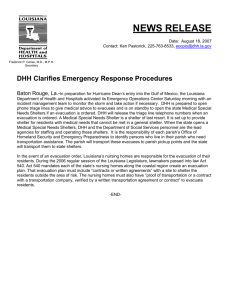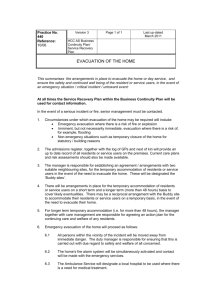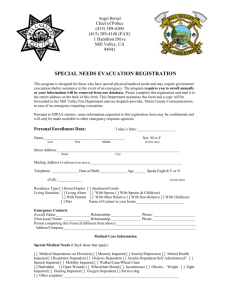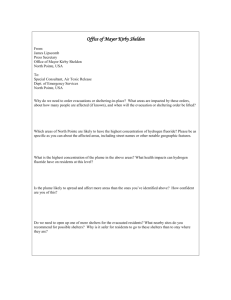it here
advertisement
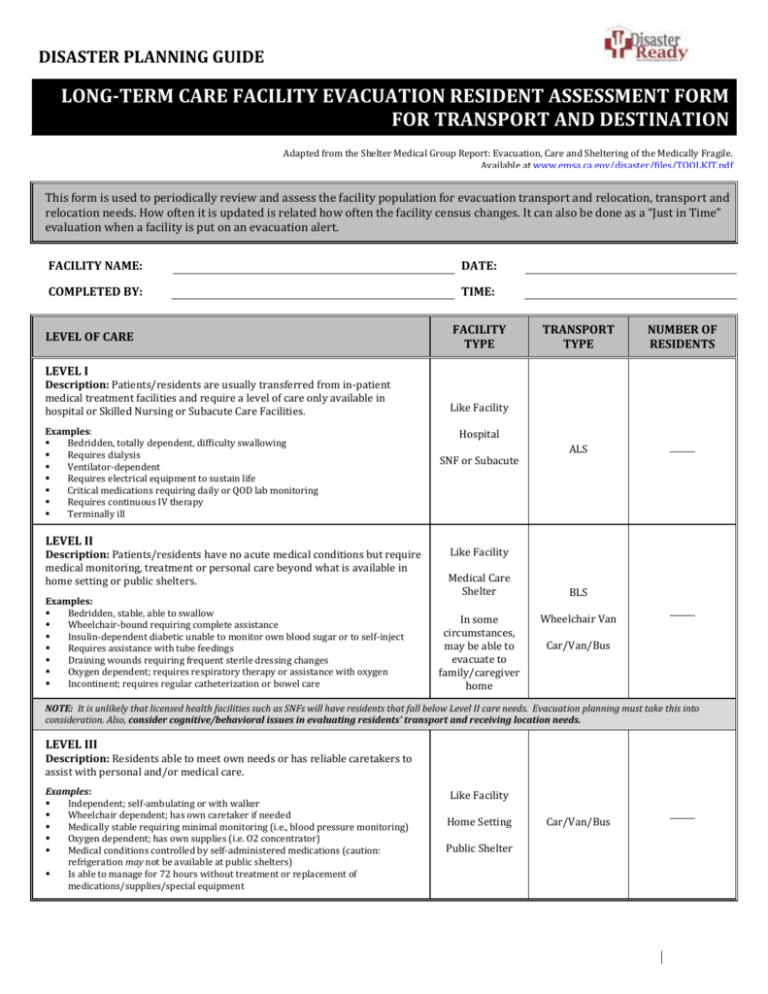
DISASTER PLANNING GUIDE LONG-TERM CARE FACILITY EVACUATION RESIDENT ASSESSMENT FORM FOR TRANSPORT AND DESTINATION Adapted from the Shelter Medical Group Report: Evacuation, Care and Sheltering of the Medically Fragile. Available at www.emsa.ca.gov/disaster/files/TOOLKIT.pdf This form is used to periodically review and assess the facility population for evacuation transport and relocation, transport and relocation needs. How often it is updated is related how often the facility census changes. It can also be done as a “Just in Time” evaluation when a facility is put on an evacuation alert. FACILITY NAME: DATE: COMPLETED BY: TIME: LEVEL OF CARE FACILITY TYPE TRANSPORT TYPE NUMBER OF RESIDENTS LEVEL I Description: Patients/residents are usually transferred from in-patient medical treatment facilities and require a level of care only available in hospital or Skilled Nursing or Subacute Care Facilities. Examples: Bedridden, totally dependent, difficulty swallowing Requires dialysis Ventilator-dependent Requires electrical equipment to sustain life Critical medications requiring daily or QOD lab monitoring Requires continuous IV therapy Terminally ill LEVEL II Description: Patients/residents have no acute medical conditions but require medical monitoring, treatment or personal care beyond what is available in home setting or public shelters. Examples: Bedridden, stable, able to swallow Wheelchair-bound requiring complete assistance Insulin-dependent diabetic unable to monitor own blood sugar or to self-inject Requires assistance with tube feedings Draining wounds requiring frequent sterile dressing changes Oxygen dependent; requires respiratory therapy or assistance with oxygen Incontinent; requires regular catheterization or bowel care Like Facility Hospital SNF or Subacute ALS Like Facility Medical Care Shelter In some circumstances, may be able to evacuate to family/caregiver home BLS Wheelchair Van Car/Van/Bus NOTE: It is unlikely that licensed health facilities such as SNFs will have residents that fall below Level II care needs. Evacuation planning must take this into consideration. Also, consider cognitive/behavioral issues in evaluating residents’ transport and receiving location needs. LEVEL III Description: Residents able to meet own needs or has reliable caretakers to assist with personal and/or medical care. Examples: Independent; self-ambulating or with walker Wheelchair dependent; has own caretaker if needed Medically stable requiring minimal monitoring (i.e., blood pressure monitoring) Oxygen dependent; has own supplies (i.e. O2 concentrator) Medical conditions controlled by self-administered medications (caution: refrigeration may not be available at public shelters) Is able to manage for 72 hours without treatment or replacement of medications/supplies/special equipment Like Facility Home Setting Public Shelter Car/Van/Bus
